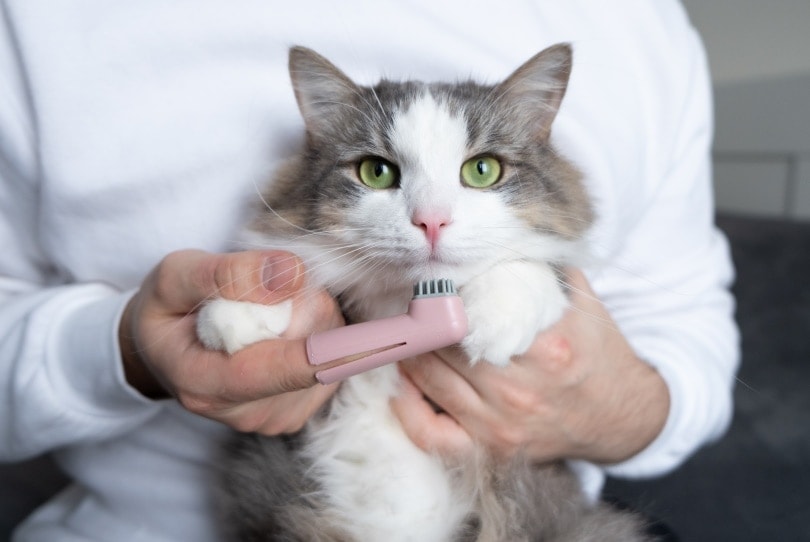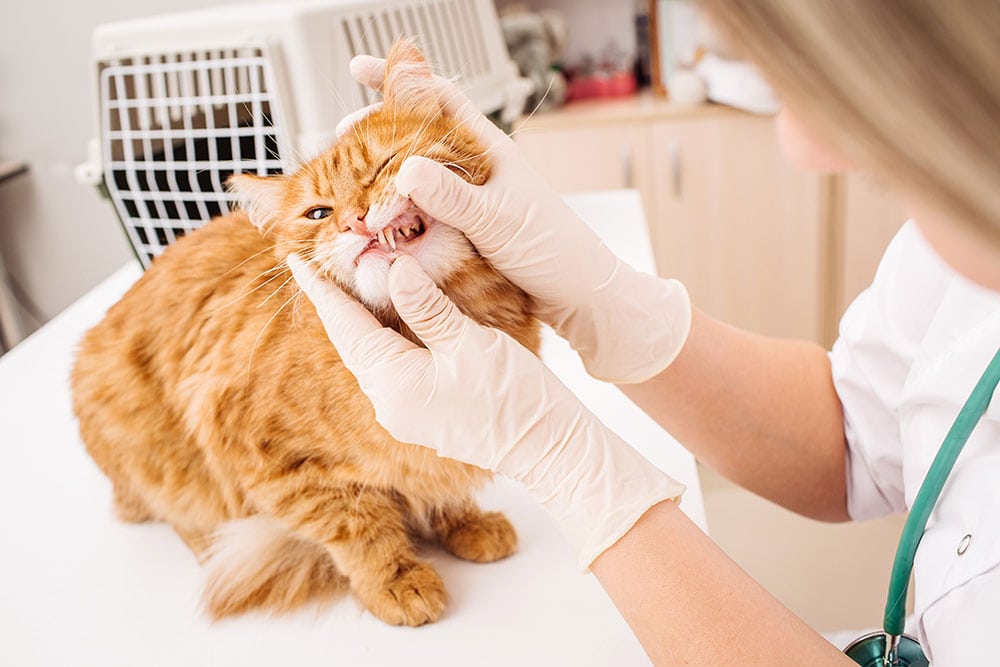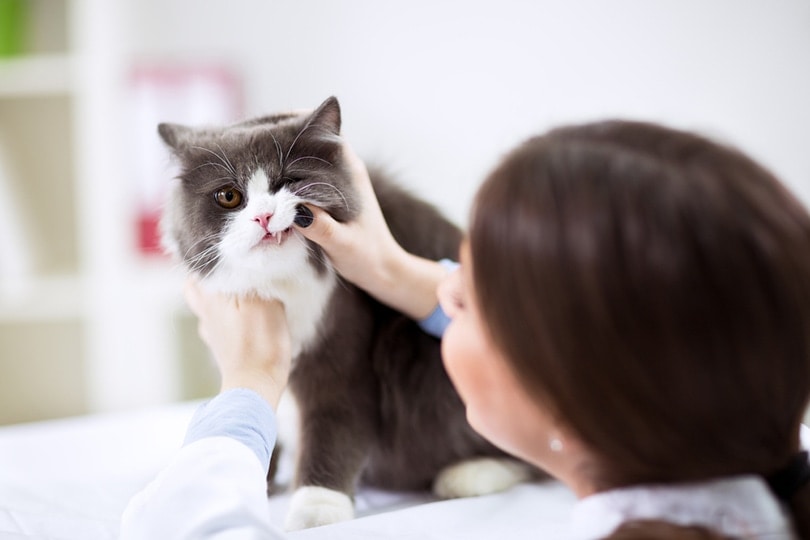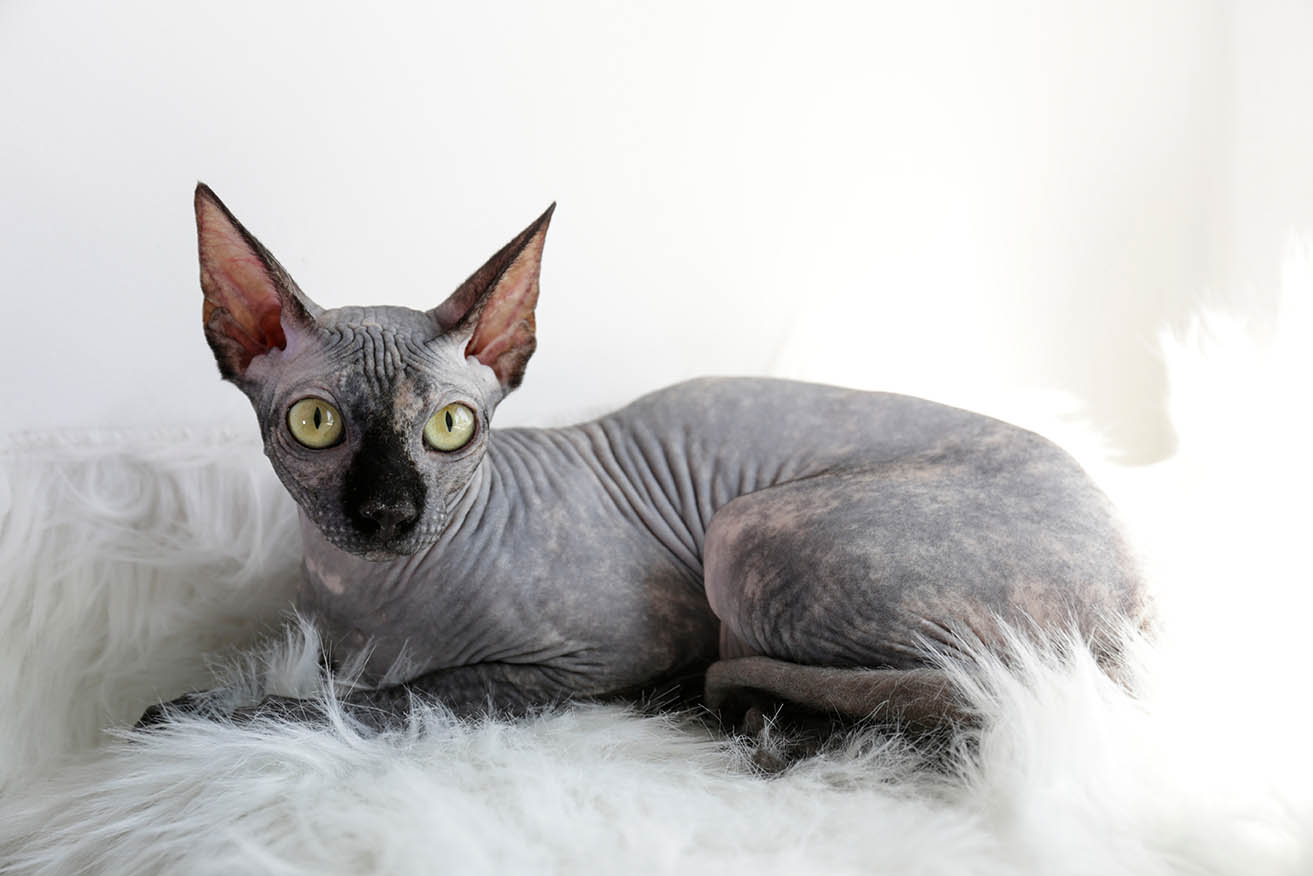Should I Brush My Cat’s Teeth? Vet-Approved Facts & Care Tips
Updated on

It’s well-known that dogs need to have their teeth brushed, so you might be wondering if it’s also important for cats. The answer is yes, you should brush your cat’s teeth.
Brushing a cat’s teeth may not be your idea of a good time, but here, we go over the reasons that this is a critical part of cat ownership, along with the best ways to use a toothbrush in your cat’s mouth and come out unscathed!
Why Must You Brush Your Cat’s Teeth?
One of the most common dental issues for cats is periodontal disease, which is the inflammation of the gums around the teeth.
Everything starts with the food that the cat eats. Food leaves a film of bacteria on the teeth, called plaque. It produces acids that work to destroy the enamel on the teeth, and if it hardens and thickens, it becomes tartar. If plaque and tartar aren’t removed, it can cause gingivitis or gum inflammation. If gingivitis is left unchecked, it can turn into a full-blown periodontal disease. This can be painful and lead to tooth and bone loss, infection, and tissue deterioration.
Studies have shown that as much as 70% of cats develop periodontal disease.

What Are the Symptoms of Gum and/or Periodontal Disease?
- Red, irritated gums
- Bad breath
- Drooling
- Bleeding from the mouth or nose or both
- Difficulty eating
- Lack of appetite
- Only eating on one side of the mouth
- Pawing at the mouth
- Missing or loose teeth
- Chattering jaw
- Lack of grooming
- Unkempt appearance
See your vet if you notice any of these signs.
One of the final stages of periodontal disease can be tooth resorption, which is a painful process in which the tooth sinks into the gums until the body reabsorbs the tooth completely.
What Supplies Do You Need?
To brush your cat’s teeth, you need a toothbrush and toothpaste made specifically for cats. There’s a variety of toothbrushes that you can try — some are tiny versions of what we use, others have dual heads, and there are also finger toothbrushes.
It’s important to only use a toothbrush made for cats, as human toothbrushes are too big for their mouths. Also, the bristles tend to be softer, as a cat’s teeth and gums are more sensitive than ours.
Human toothpaste contains ingredients that can make your cat ill, so only use toothpaste formulated for cats. Many of these toothpastes are enzymatic, which helps break down tartar and plaque. They are also flavored with fish, beef, and chicken, which might make your cat less reluctant to have their teeth brushed.

Before You Get Started
Before you grab the brand-new toothpaste and toothbrush, there are a few steps that you should take. First, speak to your vet about the best way to go about the toothbrushing process, as this will likely be a stressful event for you and your cat. Second, part of getting your cat used to having their teeth brushed is keeping the whole thing positive. Also:
- Find a quiet place: Find a quiet location with a table or counter where you can place your cat. Put a large towel or blanket on the surface, and ensure that the door is closed so your cat won’t escape. Or you can just sit with your cat on your lap. It all depends on your cat’s preferences.
- Use the brush and tuna water: Dip the training brush into the tuna water, and use it to simulate toothbrushing. This is a precursor to doing the actual thing; it should give your cat a positive connection with the tuna juice and the toothbrushing act.
- Position your cat: Make sure your cat is comfortable, and gently pull back their head so you can easily reach its teeth. Pull back your cat’s lips to expose the teeth.
- Lift the lips: Stop immediately if this act makes your cat uncomfortable. You might need to gently lift your cat’s lips for short periods, and offer a treat right after. Positive reinforcement is always the way to go with your pets! Once they seem more comfortable with this procedure, move on to the next step.
- Use the toothbrush: Gently rub the tuna-soaked toothbrush along your cat’s teeth, focusing on where the teeth meet the gums. You’ll only need to rub the outside of the teeth.
- Do a little at a time: If your cat doesn’t seem to be enjoying the experience, just do a few teeth at a time. You can slowly increase the amount of time spent rubbing their teeth.
- Upgrade: Once your cat seems more comfortable with the process, you can start using the special enzymatic toothpaste.
How Do You Brush a Cat’s Teeth?
Take this process slowly.
- Let them check out the toothbrush: Before you start, show your cat the toothbrush — let them sniff it and touch it. Give them a treat afterward. Positive reinforcement is everything!
- Let them sample the toothpaste: Put a small amount of the toothpaste on your finger, and let your cat lick it off. If they don’t want to do that, maybe try a different flavor. If all goes well, put a bit of toothpaste on the toothbrush.
- Assume the position: Put your cat on your lap or on the surface that you’ve been using, and go through the same routine that you did with the tuna water but now it will be with the real thing!
- Start brushing: Start by brushing the back teeth, followed by the canines. These are the teeth that are most often plagued with plaque and tartar.
- Don’t worry about the inside teeth: If your cat is super cooperative, you can try brushing all the teeth. But if not, concentrate on just the back and canine teeth. Your cat’s rough tongue actually does a great job at keeping the insides of their teeth clean.
- Do 30 seconds per side: As long as your cat is cooperating, it is recommended to spend approximately 30 seconds on each side of their mouth. You’ll probably have to slowly work up to that.
- Finish up: Remember to give your cat a treat when you’re done. You can wear gloves during this process, but if not, be sure to wash your hands thoroughly when you’re done and rinse the toothbrush well.
How Often Should You Brush Your Cat’s Teeth?
Technically, every day would be ideal, but your cat might have a strong opinion about that, so aim for two or three times a week. Bringing your cat to the vet’s for a professional cleaning once a year should also help keep gum disease away!
You’ll want to replace the toothbrush about once every 3 months, though this depends on how frequently you brush your cat’s teeth. Also, if you’re using a vinyl finger toothbrush, this rule doesn’t really hold, so just use your best judgment. If you have more than one cat, you’ll need a separate toothbrush for each one.
Final Thoughts
If your cat’s breath is stinkier than usual, you should visit your veterinarian. It’s best to start brushing your cat’s teeth when they are a kitten, but with patience and treats, adult cats can eventually learn to accept the process.
If you’re uncertain about your cat’s teeth or feel like you need a few pointers about the brushing process, speak to your vet. Brushing your cat’s teeth yourself can undoubtedly save you a bit of money, but the most important thing is your cat’s oral and overall health.
Featured Image Credit: Kashaeva Irina, Shutterstock















